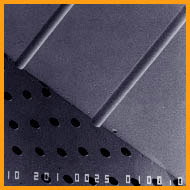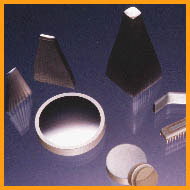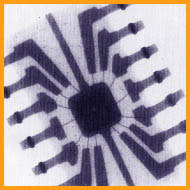ファイバ製品

Capillaries and Capillary Structures

One of the main focuses at CHI is the production of capillary arrays, also known as collimated hole structures (CHS). Through our glass drawing and etching processes , we produce arrays, disks, plates, and individual capillaries with a wide range of capillary diameters, geometries and plate sizes, all within certain tolerances.
In addition to the etching process, we manufacture capillaries and CHS using redrawn tubes. In general, tube structures and arrays are not quite as tightly packed and uniform as etchable structures, but drawn tubes do not suffer from the length to diameter ratio limitations inherent in the etching process, and they result in smoother interior surfaces than those found in etched capillaries. Both types of capillary structures have OAR's that can be varied between 1 - 70%.
You might ask, "WHAT on earth are these strange fellows used for?" Click here to look at a few examples of applications that have put them to good use.
Fiber Optics

In 1975, CHI began producing glass optical fibers in small or large quantities for anyone who needed them. This is still the case today. As a result, we have built a wide base of glass drawing experience over the intervening years with the production of untold thousands of miles of standard and custom fibers, in a wide array of diameters, geometries, OAR's, numerical apertures, and glass types. We keep a wide variety of glasses, including our patented terbium-doped scintillating glass, in stock at our plant to minimize lead times and material acquisition costs.
By stacking individual fibers into multi-fibers, we are able to produce many types of fused fiberoptics, such as light guides, multi-fiber image conduits, Fiber Optic Face Plates, image remapping devices, and fiber arrays. We also have the ability to add a layer of dark EMA glass to the exterior of individual fibers or between fibers in a fused fiberoptic, to reduce light leakage and fiber cross-talk.
Scintillators

CHI holds 5 patents on terbium-activated luminescent glasses. From these glasses, we manufacture both non-fiber and fiberoptic structures that convert non-visible high energy radiation into visible green light, such as our scintillating FOFP’s that are commonly used as X-ray conversion screens for industrial inspection systems. X-rays and other high-energy radiation enter the scintillating glass and stimulate the emission of "green" photons, which are then transmitted along the length of the fiber. The scintillating glass formulation has emission peaks at 555nm and 565nm, and a decay time of 2ms to 40% value.
Selected Performance Data